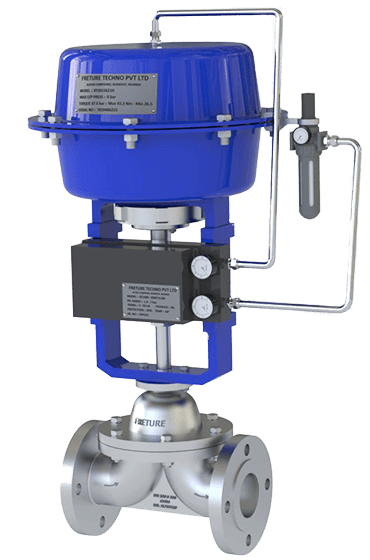In industries requiring precise fluid regulation, Diaphragm Control Valves are widely used due to their reliability and performance. These valves play a crucial role in managing flow rates, pressure, and fluid composition across various industrial applications, including pharmaceuticals, food processing, water treatment, and chemical processing.
What is a Diaphragm Control Valve?
A Diaphragm Control valve is a linear motion valve designed to regulate fluid flow by using a flexible Diaphragm to Control the opening and closing of the valve. Unlike traditional valves with complex mechanical parts, diaphragm valves offer a simple yet effective design that minimizes contamination and enhances durability.
 |
| Diaphragm Control Valve |
Key Design Features of Diaphragm Control Valves
Diaphragm Mechanism – The Diaphragm is a flexible membrane that moves up and down to regulate the flow of fluid. It is typically made of materials such as rubber, PTFE, or other elastomers, providing excellent chemical resistance and longevity.
Body Material – Depending on the application, diaphragm control valves can be manufactured from stainless steel, cast iron, or plastic (PVC, PP) to withstand corrosive and high-pressure environments.
Actuation System – These valves can be operated manually, pneumatically, or electrically, providing options for automated process control.
Flow Regulation – The valve offers precise throttling control, making it ideal for modulating applications where accuracy is essential.
Hygienic Design – Commonly used in pharmaceutical and food industries, diaphragm control valves feature a crevice-free design that prevents fluid contamination.
Advantages of Diaphragm Control Valves
Leak-Free Operation: The diaphragm creates a tight seal, reducing the risk of leaks.
Corrosion Resistance: Suitable for aggressive chemicals and high-purity applications.
Minimal Maintenance: Fewer moving parts result in lower maintenance costs and longer service life.
Versatility: Available in various sizes and materials to suit different industrial requirements.
Applications of Diaphragm Control Valves
Diaphragm Control Valves are extensively used in industries where contamination-free and precise fluid control is necessary. Some key applications include:
Pharmaceutical Industry – For sterile and high-purity fluid handling.
Water Treatment Plants – Regulating water and chemical dosing.
Food & Beverage Industry – Ensuring sanitary fluid control.
Chemical Processing – Managing highly corrosive fluids.
Conclusion
Diaphragm Control Valve offer efficient, reliable, and contamination-free fluid regulation across various industries. Their ability to withstand harsh conditions, along with precise control mechanisms, makes them a preferred choice for critical fluid handling applications. Selecting the right Diaphragm valve ensures long-term performance and operational efficiency, making it an integral component in process automation.